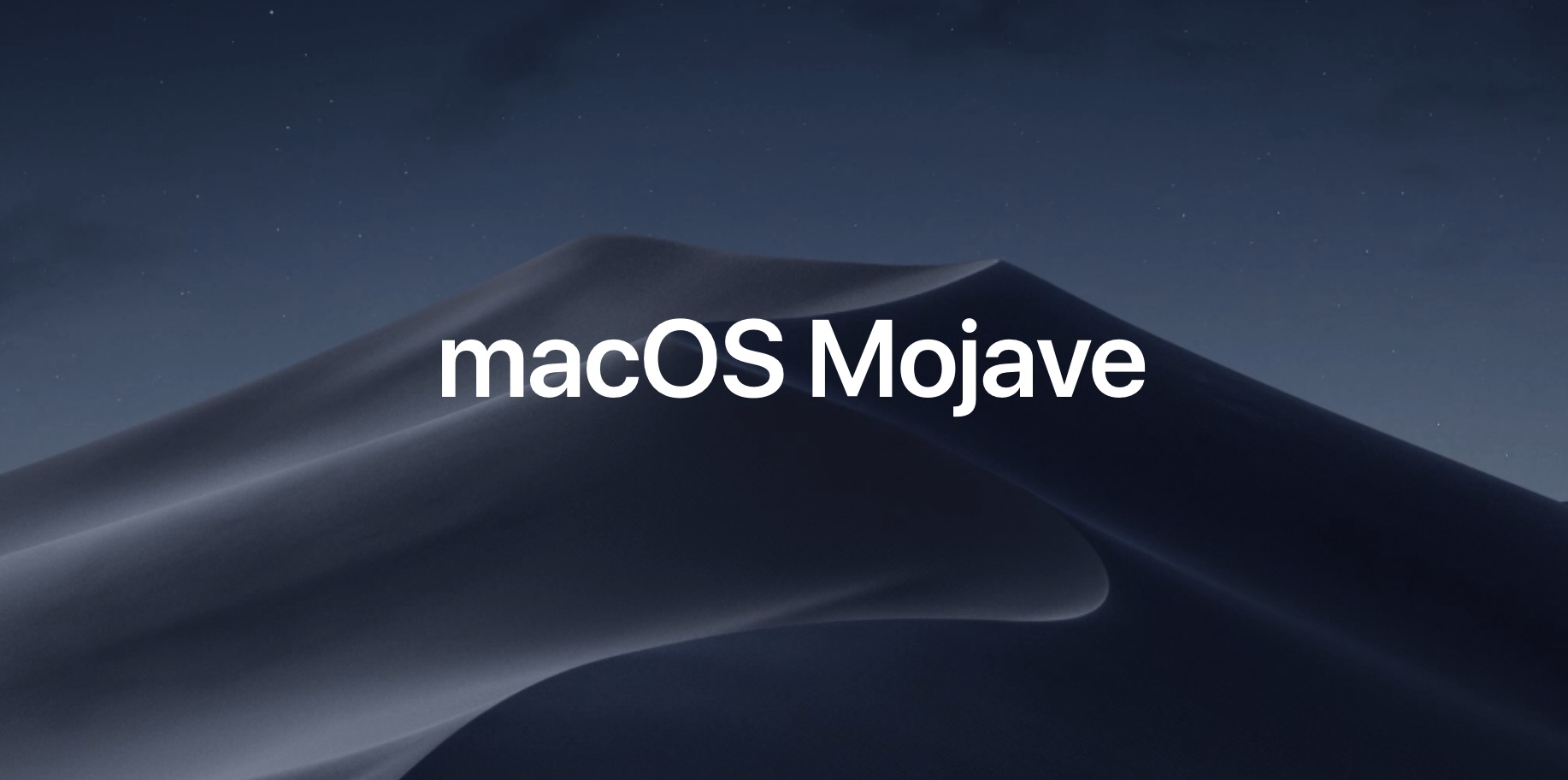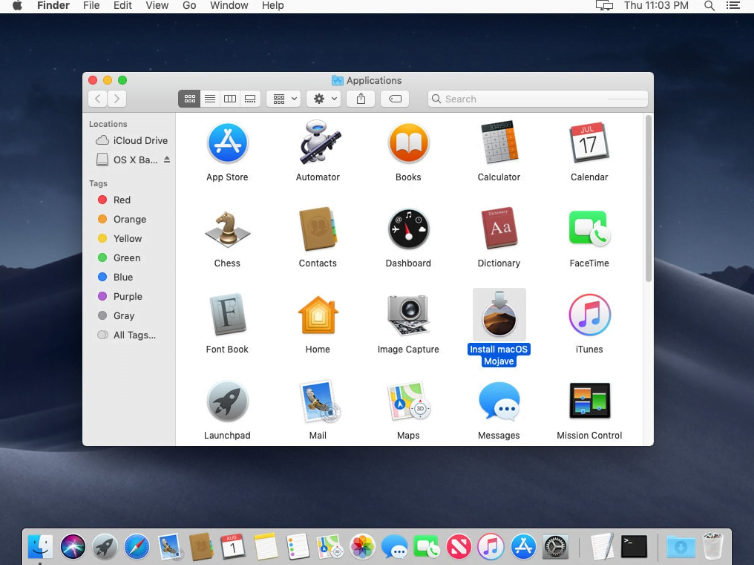This guide will walk you through creating a bootable flash drive installer for macOS Mojave which is started by first formatting the a USB flash drive and transferring the Mojave Installer over and then creating the boot partition necessary to run the Mojave Installer on a hackintosh on a non-Mac PC. Prerequisites: Downloaded Mojave and verify it’s in the /Applications folder 8GB+ Flash. Install macOS Mojave on VirtualBox on Windows PC With that in mind, we’ll install macOS Mojave on VirtualBox on Windows and run it in a virtual environment. To virtualize, you’ll need a virtualization application/program. There are some excellent virtualization apps out there like VirtualBox, VMware — VirtualBox is my favorite one. Download macOS Mojave. MacOS Mojave brings new features inspired by its most powerful users, but designed for everyone. Stay better focused on your work in Dark Mode. Automatically organize files.
- MacOS Mojave has two types of installation format. One is via Install Mojave App where you can directly download from Mac App Store. This option is not available on Mac with a new version of macOS that is newer than Mojave.
- Download the ISO File of macOS Mojave; If the above link doesn’t work then try the below ones. Download the File for macOS Mojave (Medi Fire) Install macOS Mojave VMware and VirtualBox. So, as long as there is a VMDK file then it is very easy to install macOS Mojave as a second operating system.
Mojave is still one of the most popular macOS desktop operating system in late 2020, which occupies around 20% market share of entire macOS. There are still millions of Macs or Hackintosh running Mojave as its primary OS. However, if the computer was crashed or broken, you have to reinstall macOS Mojave on it to solve the problem.
In this post, we will share a detailed tutorial on how to create a macOS Mojave bootable USB installer. At this time, we will use a Windows PC (Windows 10 laptop) as you are unable to get into the Mac. Honestly, it is much easier to create macOS bootable USB on Mac with createinstallmedia command in Terminal. You can refer to Part 6 of this tutorial if you have a Mac to do this.
Part 1: MacOS Mojave Hardware Requirement
If Your Mac was shipped with Mojave in default, then there is no need to check hardware compatibility at this time. For system downgrade or upgrade, you have to make sure your Mac hardware meet the minimal requirement for installing macOS Mojave.
For Mac:

- MacBook Pro (Mid 2012 or newer)
- MacBook Air (Mid 2012 or newer)
- MacBook (Early 2015 or newer)
- Mac mini (Late 2012 or newer)
- iMac (Late 2012 or newer)
- iMac Pro (2017)
However, if you prepared to install macOS Mojave on a Hackintosh, the requirements are different and much complex. You should do your homework more carefully. Below is an overview requirement.
For Hackintosh:
- CPU: Intel 8th or 9th Generation
- Memory: 4 GB RAM
- Storage: 128 GB SSD or HDD.
- Motherboard: Compabible with CPU (Asus, MSI Preferred)
- Graphics: AMD Radeon Recommended
Part 2: Download macOS Mojave DMG File
macOS Mojave has two types of installation format. One is via Install Mojave App where you can directly download from Mac App Store. This option is not available on Mac with a new version of macOS that is newer than Mojave.
The other installation media is via Mojave dmg file, which contacts all the files and boot information for installing macOS Mojave in a compressed structure. However, you need to burn dmg to USB first before it is used as a bootable media. Now, you can download macOS Mojave DMG file the following resources:
Download Link 1: https://archive.org/download/macOS_Mojave.dmg
Download Link 2: https://sundryfiles.com/9tz
Part 3: Create macOS Mojave Bootable USB Installer on Windows 10 PC
You have completed the preparation process in above steps and it is time to create a bootable Mojave USB installer from the download dmg file. Unfortunately, the USB would be bootable if just simply copying the dmg file to USB drive without additional actions because the booting code is not written to USB via file copy. Instead, you should use third-party software to help you create a macOS Mojave USB drive from DMG file.
UUByte DMG Editor is such a tool for burning dmg file to USB drive. It will copy all installation files and write boot information to USB drive as well. After burning, the USB is bootable and can be used as a media to install macOS. The following is the details for creating macOS Mojave bootable USB drive.
Step 1: Click the Download button and save the .exe file on your Windows PC; then double click it to start the installation process.

Step 2: Insert a USB drive into the PC and open DMG Editor software from desktop shortcut. Now, click Next button at the right side of Burn module.
Step 3: Now, you need to import the downloaded Mojave dmg file into the program and choose the USB drive name from drop-down menu.
Step 4: When the preparation is done, click Burn button to start burning macOS Mojave dmg file to target USB device. You have to wait for 5-10 minutes for this.
This is one of most reliable ways to create macOS Mojave bootable USB drive on a Windows PC. You can use DMG Editor on latest Windows 10 as well as Windows 8/7/XP.
Part 4: Install macOS Mojave from USB Drive on Mac
After creating macOS Mojave bootable USB drive, it is the right time to install Mojave on your Mac. If possible, make sure taking a backup of important data on your Mac. The installation process will format the drive and this will delete all your personal data and apps from Mac.
To get started, please connect the USB drive to Mac and power on the computer. Keep pressing the Option key and you see the Startup Manager in a few seconds. Click on the USB drive name with your mouse to enter into installation page. Next, select the internal drive and finally click Continue button to begin the installation process.
Note: For installation on a Hackintosh, you need additional tool to configure the boot loader, such as OpenCore or Clover. After that, plug the USB into Hackintosh and set USB as the first boot device in BIOS. By doing this, you will manage to get into Mojave install wizard.
Part 5: Possible Issue and Fix

According to our research, there might be a few issues during this process, which were reported by online users. Below is a list of most common issues you may come across. Please don't be scared as we also share possible fix to help you out!
USB Not Showing up in Startup Manager: If the USB drive burned with DMG Editor did not show up in Startup Manager, it means the burning process failed. The most possible reason is that the dmg file was corrupted, you need to download it from another source and burn it again.
No available drive for installation. Mojave is built with APFS but the old Macs come with HFS or HFS+. You have to boot into macOS Recovery mode and format the drive to APFS with Disk Utility app.
It could be more issues with Hackintosh and we don't have less epxerience on this topic. Please go to Hackintosh blog or forum for more accurate solutions.
Conclusion
Download Macos Mojave For Intel Pc
The above are the necessary steps intended to create a macOS Mojave bootable USB on a Windows 10 PC. Please read them carefully, especially the hardware requirement section. You won't be able to install Mojave on a Mac that does not meet its technical specification. You can also send us email if you have issue not being solved by your own.
